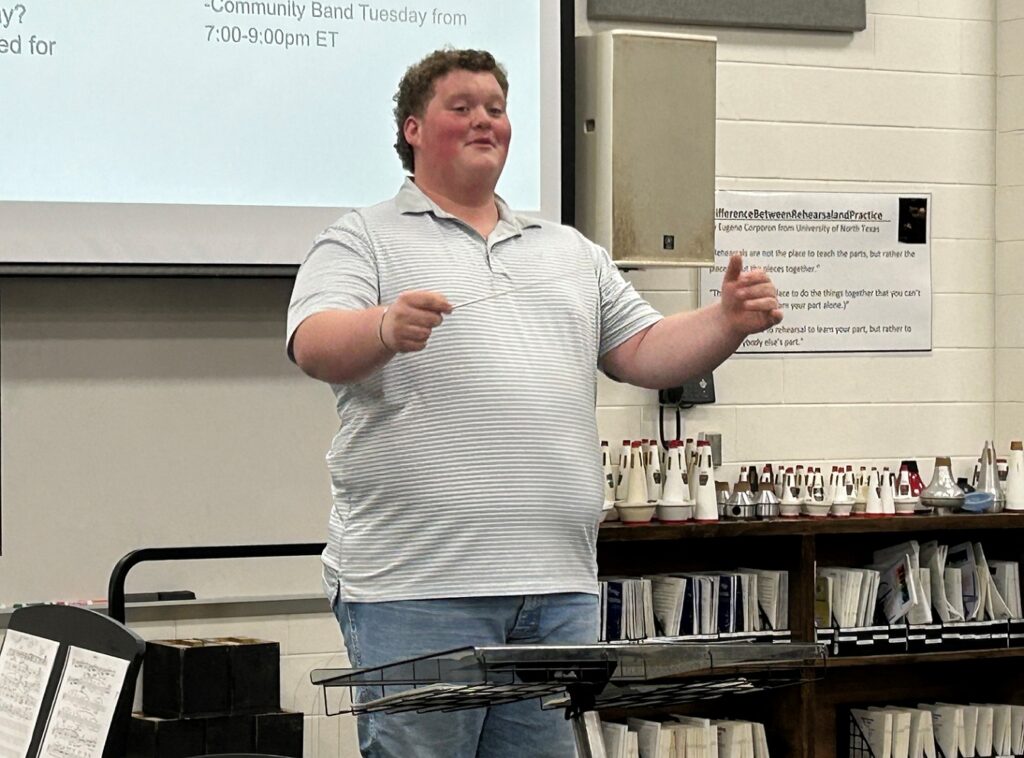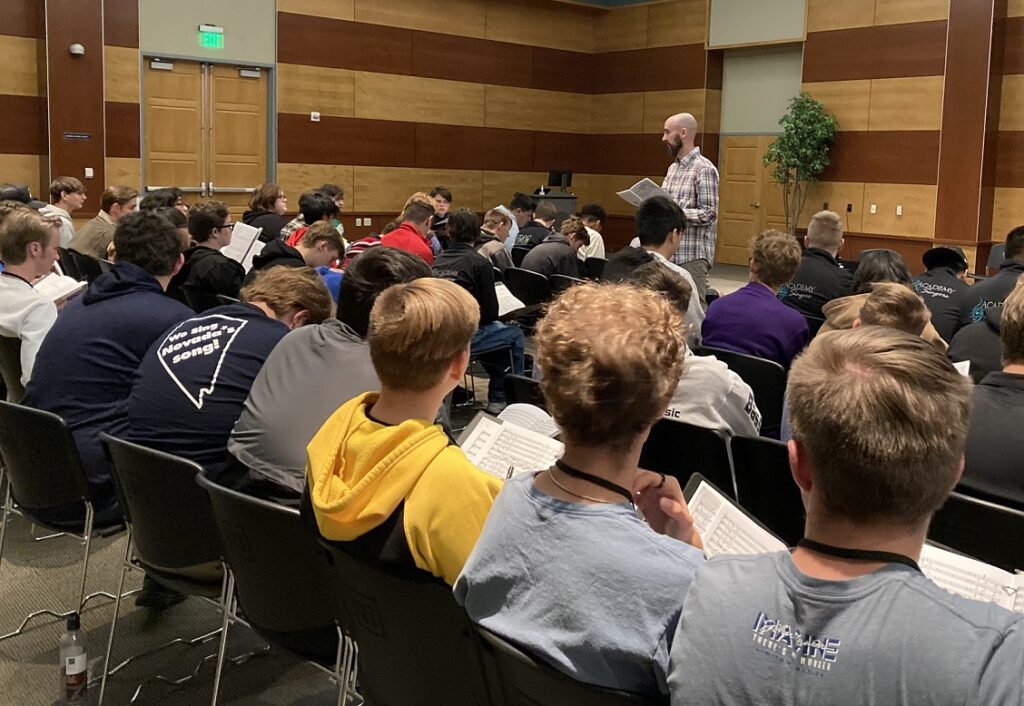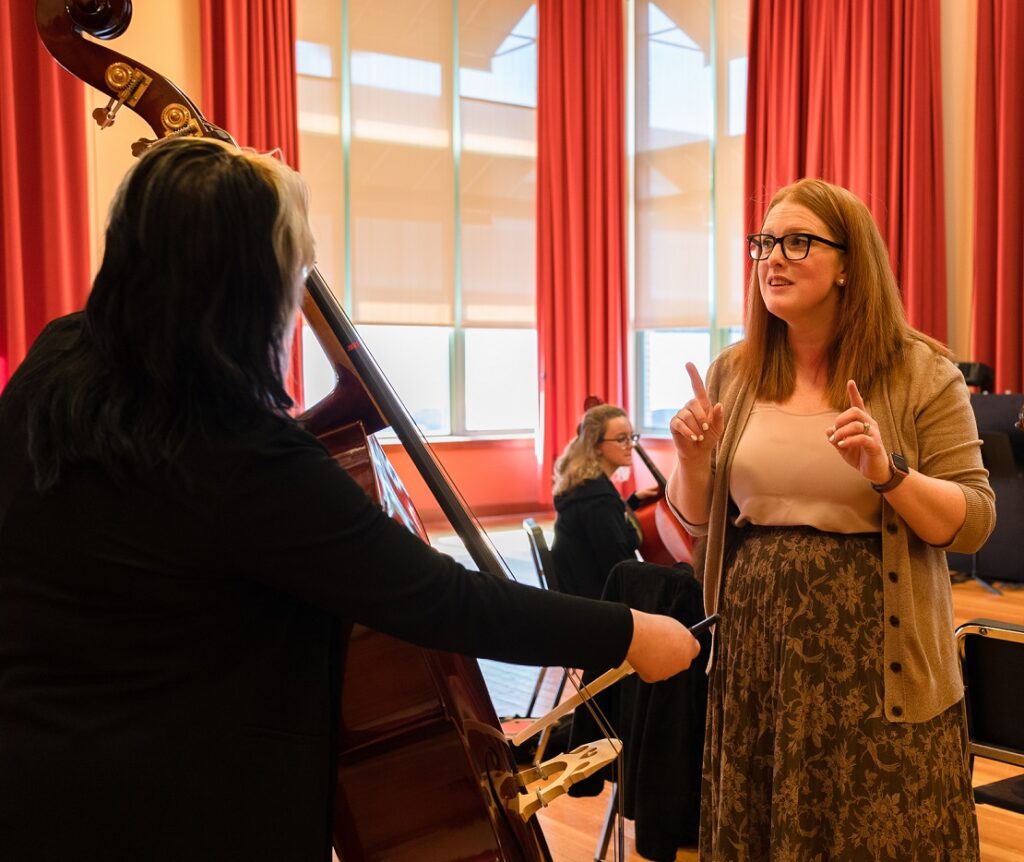Tagged Under:
5 Recruitment Tips You Must Try!
Recruitment is a big part of ensemble directors’ jobs. Don’t look at it as a burden, but rather as a way of turning potential students into “our kids.”
The summer before I started 4th grade, I attended a week-long instrument camp, where we spent an hour each day learning about and trying the different instruments in band and orchestra. I already played piano, but I fell in love with the cello and euphonium. In my school district, orchestra started in 4th grade, while band didn’t start until 5th. I was impatient and picked the cello so I could start right away. Nearly 30 years later, I still remember how fun the experience was, and how eager it made me to join a musical ensemble.
Now, as the Orchestra Director at Riverside Junior High School and Riverside Intermediate School in Fishers, Indiana, I try to tap into that childhood memory as we gear up for recruitment each year. In junior high, we start band and orchestra in 6th grade (choir involves a slightly different process and doesn’t officially begin until 7th grade). Our process has evolved over many years, and we’ve learned a lot along the way.
I’ve compiled five big tips for recruitment based on our experiences, with many smaller ideas wrapped in. Click on the links below to learn more about each tip:
- Tip #1: Start Early!
- Tip #2: Get the Kids Excited!
- Tip #3: Call it a TRY-ON, Not a Try-Out or a Test
- Tip #4 Get Every Kid to Try on an Instrument
- Tip #5: Remove Barriers and Make it Easy for Families to Sign Up
We have seen successes with this process (our beginning band at the intermediate school regularly has more than 150 students, while orchestra has eclipsed 100 students in multiple years), and I hope that at least some of these ideas can prove fruitful for you as well.
THE YAMAHA EDUCATOR NEWSLETTER: Join to receive a round-up of our latest articles and programs!
Tip #1: Start Early!
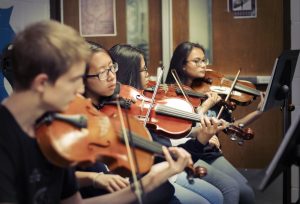 We often think of recruitment as a one-night-only event. You show up, the kids see and/or try the instruments, and then they sign up. That’s it.
We often think of recruitment as a one-night-only event. You show up, the kids see and/or try the instruments, and then they sign up. That’s it.
However, students might need more time to think and decide. Providing a longer recruitment period and multiple points of contact will drum up more excitement and will give students something to look forward to, which in turn can lead to higher numbers.
At Riverside Junior High School, recruitment is a three-month process. Yes, really. In late February/early March, we visit each of the 5th-grade general music classes. It takes one afternoon a week for three weeks, and we help cover for each other’s classes. In April, we bring together the entire 5th grade for a concert, where one junior high band and one junior high orchestra take turns playing catchy, engaging music (this year featured “The Chicken Dance,” “Uptown Funk” and more). Then in early May, the 5th graders get to experience the instruments themselves. We wrap up the process with an informational meeting in mid-May, where families learn more about the program and can secure a rental instrument on the spot.
I know this is a lot. Even if you can’t do it all, find a way to go from one interaction with your potential students to two. Ask your elementary music teachers (or the classroom teachers) to lay the groundwork for you. Can they get the kids thinking about it early by introducing the instruments or showcasing the program? Planting those seeds early will be worth it.
Tip #2: Get the Kids Excited!
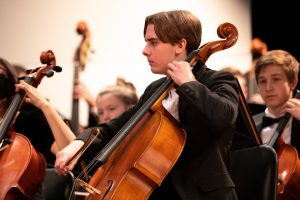 That first general music class visit in the winter is short! I demo all four string instruments and introduce our programs in about 15 minutes. I am saccharine sweet and bubbly. Why? Because kids have limited attention spans, and the worst thing I can do is drone on about class rules and logistics. No need to talk about rental fees or playing tests. They will come later. It’s easy to forget that a big reason kids join your program is because of you! Be energetic, welcoming and fun. They’ll leave thinking, “Wow, I want to be in that teacher’s class!”
That first general music class visit in the winter is short! I demo all four string instruments and introduce our programs in about 15 minutes. I am saccharine sweet and bubbly. Why? Because kids have limited attention spans, and the worst thing I can do is drone on about class rules and logistics. No need to talk about rental fees or playing tests. They will come later. It’s easy to forget that a big reason kids join your program is because of you! Be energetic, welcoming and fun. They’ll leave thinking, “Wow, I want to be in that teacher’s class!”
If you can’t visit in person, make a video. A great tip I learned: Match your video length to the grade level. For 5th graders, send a five-minute video. If you send a 30-minute one, the kids will tune out. Keep it short and simple.
Even better: Involve your current musicians, if you’re able. Have them play something on their instruments or give two sentences on why they love music so much. It will have so much more meaning coming from a peer rather than “boring old teachers.”
When it comes time for that joint concert, remember, it is not a competition. At Riverside, all of our recruitment language — in the class demos, at the concert and on our paperwork — mention both band and orchestra (choir starts a year later). Students can sense if you are trying to woo them or are undercutting the other ensemble. We should be thrilled that a student is choosing to partake in music, regardless of instrument choice.
Tip #3: Call It a TRY-ON, Not a Try-Out or a Test
This tip might be my favorite, and it comes from our former instrument store road man, Steve Purcell, from Paige’s Music. Hearing him say “try-on” was like a smack to the forehead. A “try-out” or a “test” implies that a student can be cut or fail, which undermines creating an inviting, inclusive environment. However, if a kid gets to “try-on” instruments, it becomes about finding the one that fits them best. I just love that! A small change, but a HUGE shift in perspective.
Tip #4: Get Every Kid to Try On an Instrument
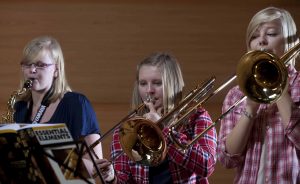 One year, our band directors were lamenting about their low numbers. It was noted that we had opt-in testing. Students had to turn in a form to try the instruments. That is a barrier to participation, and we want as few barriers as possible. So, we worked with our administration to switch to opt-out testing. Students are brought down to the try-on room as a whole class. Every student tries at least one instrument, unless they have a note from their parent/guardian asking them not to (which is incredibly rare). Upon making this change, our numbers skyrocketed.
One year, our band directors were lamenting about their low numbers. It was noted that we had opt-in testing. Students had to turn in a form to try the instruments. That is a barrier to participation, and we want as few barriers as possible. So, we worked with our administration to switch to opt-out testing. Students are brought down to the try-on room as a whole class. Every student tries at least one instrument, unless they have a note from their parent/guardian asking them not to (which is incredibly rare). Upon making this change, our numbers skyrocketed.
Sometimes, kids get overwhelmed and confused by their third or fourth instrument (at Riverside, they can try up to three band and three orchestra instruments during their try-on time). I had many instances where every instrument was “good” or “fun.” How do they choose among those generic feelings?
I found that asking students to rank each instrument on a scale from 1-10 — while they are playing — helps. Use descriptive phrases like 1 = “the worst thing ever, I’d rather have my teeth pulled” and 10 = “that was the greatest thing I’ve ever done, I saw stars and unicorns.” I remember which number a student used on their first instrument, and when they move to the next one, I use it as a reference point. “You ranked the violin as a 7, do you want to rank the viola higher than that, or lower?” It’s a more tangible, relatable system for younger kids to process their thoughts and emotions.
Tip #5: Remove Barriers and Make It Easy for Families to Sign Up
If you can, do your try-ons during the school day. After-school sessions are another barrier to participation because students often can’t get a ride or they have multiple other activities. Do the try-ons during the day if you can find a way to carve out the time. Our trade-off is that we don’t see our beginning groups for a week and use that time for instrument try-ons. It can be daunting to meet with that many students, so, don’t do it alone. Ask for help from colleagues, private teachers, sectional coaches or instrument store employees. (Paige’s Music provides people — usually retired teachers, studio/freelance musicians with some education background, etc. — to help with instrument try-ons, free of charge to us, which is massively helpful.)
Registration paperwork is simple and straightforward. Kids leave try-ons with a single paper containing their instrument choice, some info for their adults about the whole process and a QR code to a registration form. It’s the same form for both band and orchestra and contains only the necessary information (name, student ID, adult contact, instrument choice).
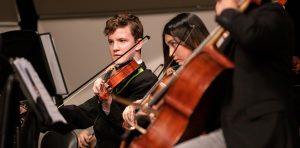 Because every student tries instruments, following up is a simple process. A letter goes out to all 5th-grade families, reminding them of the opportunity to join a music ensemble. Our secretaries help with the logistics. We skip the students who have already signed up and send a letter to everyone else.
Because every student tries instruments, following up is a simple process. A letter goes out to all 5th-grade families, reminding them of the opportunity to join a music ensemble. Our secretaries help with the logistics. We skip the students who have already signed up and send a letter to everyone else.
Our informational meeting is more than just giving parents/guardians the class rules and expectations. We focus on introducing ourselves, much like we’ve done with the students. Our rental company is there, and families can secure their rental instrument that night. No need to wait until the fall and risk the summer drop-off, where kids lose interest or adults forget to do the paperwork. Their rental is secured in May and delivered to the school in August, ready for the first day of school.
Bonus: Our rental company provides the needed accessories (shoulder rests, rock stops, rosin, slide grease, etc.) along with our method book in a “starter pack” that is included with the rental. It makes the process so much simpler for families and is less work for us! If you work with a rental company, see if they can do something similar. The band directors and I also make a list of students who need school-owned instruments due to financial concerns, which ensures their rental is also secure before they leave the informational meeting.
That informational meeting is also face-to-face time with the parents/guardians, which otherwise we might not get until the first concert. We start making those connections before students even start class. For families that cannot attend, we provide all the information and rental company links in a follow-up email.
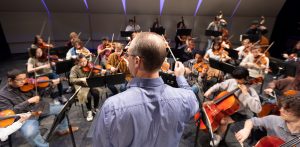 It’s Worth it!
It’s Worth it!
Recruitment is a vital piece of what beginning ensemble directors do. It can feel like a burden because it takes us away from “our kids.” Remember that it is through these efforts that potential students become “our kids.” The time and energy will be worth it when your room is full of eager new musicians.
Take time to examine your recruitment process — what barriers exist to student participation, and in what ways can you increase engagement and excitement? If you can try even one change in your recruitment based on these tips, it is my hope that you see positive results with more students engaging in music!












